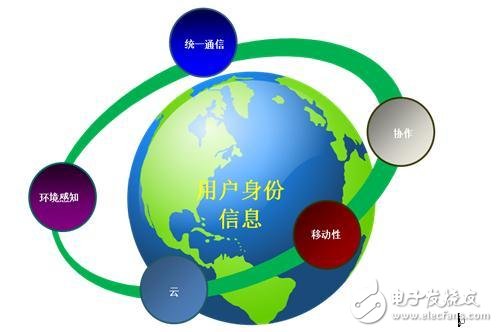Today's enterprise business is becoming more and more globalized, and the world we work in is now in an unprecedentedly complex interconnection. Colleagues, family members, and friends often travel on business trips and continue to meet and communicate with other team partners around the world. The more frequently work scenarios change, the more important it is for business development to obtain appropriate and flexible communication tools. The concept of "Profile Mobility" supports the need to obtain communication tools from both technical and business perspectives, supports users to access user identity information from available resources anywhere, and ensures normal business continuity, So as to effectively improve user experience and work efficiency.
John is a sales executive and travels frequently. He works for a global company with offices in both China and the United States. John conducts telephone sales every month to tap potential customers. He usually calls customers at the office. Each office has multiple "hotel-style stereo offices" for John's use. These offices are equipped with the latest and most advanced video IP desk phones and multiple accessories for connecting laptops.
But John encountered a problem: he could not access his identity information, and this identity information could activate all his settings and configurations in the stereo office, and each local system administrator had set several important permissions. In this example of John, he not only needs to access the identity information with all the basic settings, but also needs to access important data and documents. Without this information, he cannot work normally. John likes video desk phone, but at this moment, the video desk phone has become a decoration. Although it has high-tech functions, it is useless. John is very frustrated.
So, what will happen to John's work after applying the concept of "Profile Mobility"? Now, John has entered the Shenzhen office. He likes the new hotel-style stereo office assigned to him by the company. The phone immediately shows his identity information, including all contact information, and can also use all the permissions that are open to him. John binds the phone to the laptop, and the phone also runs on the same interface (the interface he uses every day), and works effectively through all the tools he uses every day. John found that the video desk phone provided some new and cool features, which enabled him to communicate more conveniently. He was very satisfied with it: now the video desk phone is not just a display, maybe he can ask the manager to ask him An additional set of video desk phones is installed on the desk in Santa Clara.
John ’s previous work style is the reality portrayal of the employees of most global companies. With the use of Internet technology on corporate desktops, more and more companies and employees realize the need for convenient communication systems, especially the need for "unification." "Communication" tool to achieve accurate flat addressing and seamless access to user identity information no matter when and where. "Plane addressing" is to make users an indispensable part of the entire enterprise, rather than focusing on a specific (may be designated by a city) area. Therefore, users need to be associated with "company.com" instead of "shenzhen.company.com". If user needs are diametrically opposed, users cannot be expected to be localized: what they need is globalized open and transparent access. Users can store their identity information on their smartphones, or they can identify their identity information through permission marks or genetic biometrics. Any or all methods can be used to identify individual users, allow and / or prohibit the use of set permissions and their commonly used tools, and most importantly, allow and / or prohibit access to their basic system identity information. In other words, the system is intelligent, and the system can access information regardless of the user's geographic location.

The concept of "identity attribute mobility" is not only applicable to business trip scenarios. The system should allow transparent access to multiple devices in multiple locations. The system should be smart enough to facilitate the use of functions within the local resources and capabilities of each device. The basic characteristics of today's ubiquitous Internet applications are consistent historical settings and simultaneous login. Business users are consumers of Internet technology, and they want to use similar functions in different workplaces. No matter what the situation, and regardless of geographic location, users can use this ability to access their settings.
The lack of a superior user experience for the unified communications portfolio will not work. Allowing users to use the system from anywhere in the world is like using the system on their desks is just the beginning of the Internet transformation. From being just a communication tool to a platform that can essentially provide a better user experience and integrated business tools, this is a small change, but it is an extremely important first step.
High Bay Retrofit LED is Designed for High-bay & Low-bay Retrofit Lights from BBIER are one solution for large spaces such as gymnasiums, warehouses and big retail stores that have high ceilings. Use Retrofit Lights to replace your metal halide bulb equivalent and you'll save energy in the long run. These Led Retrofits lights also last longer than alternative bulbs, meaning you can also spend less money on replacement costs. Choose from 175-watt, 250-watt and 400-watt equal Retrofit Led Lights 70W,100W and 120W, you can also pick from a wide selection of base types and color temperature.Led Recessed Retrofit is good quality.

High Bay Retrofit LED
Retrofit Lights,Led Retrofits,Retrofit Led Lights,Led Recessed Retrofit
Shenzhen Bbier Lighting Co., Ltd , https://www.chinabbier.com